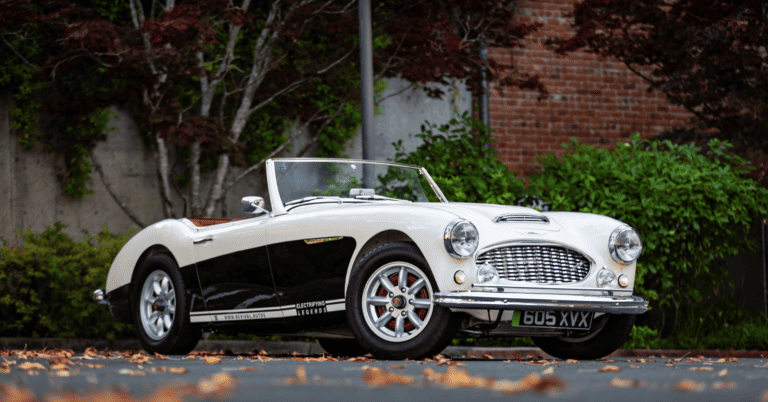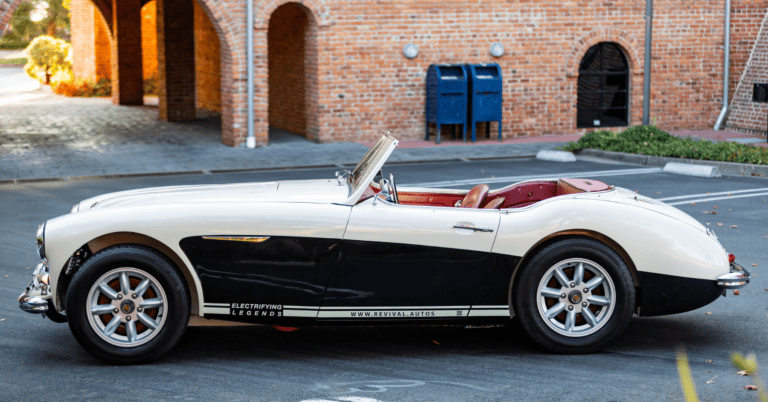In a world where sustainability reigns supreme and innovation drives our roads, the quest for electric mobility has taken center stage. Imagine this: the humming engines of tomorrow’s highways are not just silent but also powered by the electric surge of progress. Today, we’re peeling back the curtain on a remarkable evolution – a seismic shift from roaring combustion to a symphony of silent power. Curious minds, buckle up! We’re about to unravel the electrifying journey of converting a car to electric, a transformation that’s more than just a trend. The staggering rise of electric vehicles (EVs) has become an undeniable force, with statistics revealing a surge of over 60% in electric car sales over the past year alone. It’s a testament to the wave of change sweeping across our highways, where traditional engines are making room for electrifying alternatives. So, as we kickstart this electrifying ride, get ready to explore the ins and outs, the ‘hows’ and ‘whys,’ of joining the electric revolution and paving your path towards a greener, more efficient future.
Learn more: electric classic cars
In a world where environmental concerns and technological leaps intersect, the concept of converting a car to electric has surged to the forefront of automotive innovation. What was once a distant dream has become a palpable reality, embodying the fusion of scientific principles, engineering prowess, and a collective commitment to a greener future. This comprehensive guide dissects the intricate process, drawing from scientific foundations and real-world application, to empower enthusiasts and eco-conscious individuals alike in their pursuit of electrified transportation.
The Electric Conversion Revolution
Converting a Car to Electric is not quite a fashion. It is going to be a transformative movement poised to redefine automotive industry. According to recent industry data, electric car sales have witnessed a staggering increase. This shift is not just the indicative of consumer preferences. Rather, it underscores the realization that sustainable as well as energy efficient transportation is no longer a luxury, but a need.
The Scientific Core: Understanding Electric Propulsion
At the heart of electric vehicle conversion lies the profound understanding of electric propulsion. The science is elegantly simple: internal combustion engines are replaced with electric motors powered by high-capacity batteries. This shift eliminates tailpipe emissions and significantly reduces the carbon footprint associated with traditional fossil fuel-powered vehicles.
Electric vehicles operate on principles of electromagnetism and energy conversion. Electric current flowing through the motor’s coils generates a magnetic field that interacts with fixed magnets, resulting in rotational motion. It is a force that drives the wheels. This intricate interplay of forces is grounded in the laws of physics such as Faraday’s Law and Ampère’s Circuital Law.

The Conversion Process Unveiled
Step 1: Disassembly and Assessment
The process commences with disassembling the vehicle to assess its components’ compatibility with the electric conversion. This includes evaluating the chassis, suspension, and braking systems to ensure they can accommodate the weight and dynamics of the electric powertrain.
Step 2: Powertrain Removal
The existing internal combustion engine, fuel tank, and exhaust system are removed to make way for the electric powertrain components. This marks a pivotal moment where engineering meets innovation.
Step 3: Installing the Electric Powertrain
Installing the electric motor, inverter, battery pack, and associated components demands precision. Each piece of the puzzle is strategically positioned to optimize weight distribution, stability, and performance.
Step 4: Wiring and Integration
Wiring the components is a meticulous process, akin to connecting the neural pathways of the vehicle. Sensors, controllers, and safety mechanisms intertwine, ensuring seamless communication and operation.
Step 5: Software Configuration and Testing
Modern electric vehicles rely on intricate software systems to regulate power delivery, battery management, and overall performance. Rigorous testing ensures these systems operate harmoniously.
The Investment and Return
The decision to convert a car to electric entails an initial investment. As per given data available to the industry experts it is clear that a standard electric car conversion kit can range from $5,000 to $20,000. This expenditure covers not only the electric motor, battery pack, inverter, charging components, but also labor costs. While the initial or upfront cost might raise eyebrows. Stay strong because the long-term benefits are compelling.
Electric vehicles boast significantly lower operating costs compared to traditional vehicles. Charging an EV costs a fraction of refueling a gasoline car, and the absence of oil changes and reduced maintenance contribute to substantial savings over time. Moreover, environmental incentives and reduced emissions levies in various regions further sweeten the deal.
Embracing the Future: Our Role in Sustainable Progress
The journey of converting a car to electric encapsulates the synergy of science, innovation, and environmental stewardship. It’s a reminder that our choices today sculpt the contours of tomorrow’s world. By embracing the conversion movement, we actively contribute to reducing greenhouse gas emissions, diminishing our carbon footprint, and catalyzing the transition towards sustainable transportation.
In a world where the road to progress is illuminated by scientific discoveries and engineering marvels, the act of converting a car to electric stands as a testament to human ingenuity. It’s a narrative of transformation – of machines, minds, and our collective commitment to steering towards a cleaner, brighter future.
Auto Revival: A Legacy of Transformation
At Auto Revival, we breathe life into classic cars, embracing a journey that seamlessly melds timeless elegance with cutting-edge innovation. Our legacy is one of transformation, where vintage vehicles evolve into electric marvels, driving towards a future of sustainability and performance. With a commitment to preserving the essence of classics while integrating the power of electric propulsion, we stand as a beacon of excellence in the realm of automotive metamorphosis. Join us in revolutionizing the way we experience classic cars, as we invite you to embark on an electrifying journey with Auto Revival.
Our Experts: Masters of Electric Metamorphosis
Behind every successful conversion lies the expertise of our accomplished team. Our experts are seasoned engineers and enthusiasts who possess a deep-rooted understanding of the intricacies that come with converting a car to electric. Armed with a wealth of experience and technical prowess, they orchestrate a harmonious integration of components, breathing life into vehicles while upholding safety standards and performance benchmarks. Their authority stems from a dedication to excellence, making them the driving force behind Auto Revival’s transformative journey.
FAQs
- How does process of turning a gas car into an electric one work?
Converting your car to electric involves swapping out the traditional combustion engine for an electric motor and battery system This transformation requires dismantling, integrating electric components, and ensuring a seamless fit.
- Can any car be converted to electric power?
While electric conversions are feasible for many cars success depends on variables like chassis adaptability weight distribution, available space to house the new components.
- How long does it take to complete electric car conversion?
The timeline depends on complexity of the conversion and skill of the technicians involved. On average the process can span from several weeks to few months.
- What included in standard electric car conversion kit?
A conversion kit typically comprises an electric motor battery pack, inverter charger motor controller and wiring setup. These building blocks constitute the core elements of the electric powertrain.
- How does cost of conversion compare to purchasing brand new electric car?
Conversion costs vary widely, but often come in below the price tag of a new electric vehicle. Yet remember to weigh factors like warranty coverage, driving range features before making a choice
- What benefits come with converting a car to electric?
Converting to electric offers reduced emissions, lower operating costs, and a quieter, smoother driving experience. It also breathes new life into classic cars while aligning with eco-conscious values.
- Is DIY conversion recommended?
Converting a car to electric is a complex process that requires technical expertise. While some enthusiasts attempt DIY conversions, it’s advisable to seek professional help for safety and optimal performance.
- Are there government incentives for electric car conversions?
Some regions offer incentives such as tax credits or grants for converting to electric. Research local policies and incentives to determine potential savings.
- Can I choose the driving range and performance of the converted car?
Yes, the driving range and performance can be tailored to some extent based on the battery capacity and motor specifications chosen during the conversion process.
- How do I find a reputable conversion service?
Research conversion specialists with a track record of successful projects. Look for reviews, certifications, and expertise to ensure a reliable and quality conversion experience.





